Companion planting is a smart way to boost your cantaloupe harvest by improving pollination, deterring pests, and enhancing soil health. Choosing the right plants to grow alongside your cantaloupe can lead to sweeter, juicier melons and a more productive garden. In this article, we’ll explore 19 of the best companion plants to help your cantaloupes thrive.
Marigolds
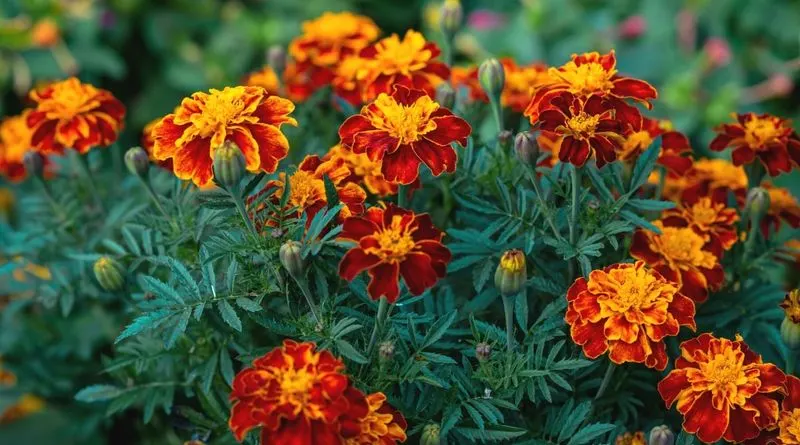
Incorporating marigolds into your cantaloupe patch can be a game-changer for pest control. These vibrant flowers are known to repel nematodes, aphids, and other common pests with their strong scent. Position them around the perimeter of your cantaloupe plants for a natural protective barrier. The rich, golden hue of marigolds also adds a splash of color to your garden, making it more visually appealing. Plus, they attract beneficial insects, like ladybugs, which help keep harmful pest populations in check. This dynamic duo ensures your cantaloupes grow healthy and pest-free, maximizing your harvest potential.
Radishes
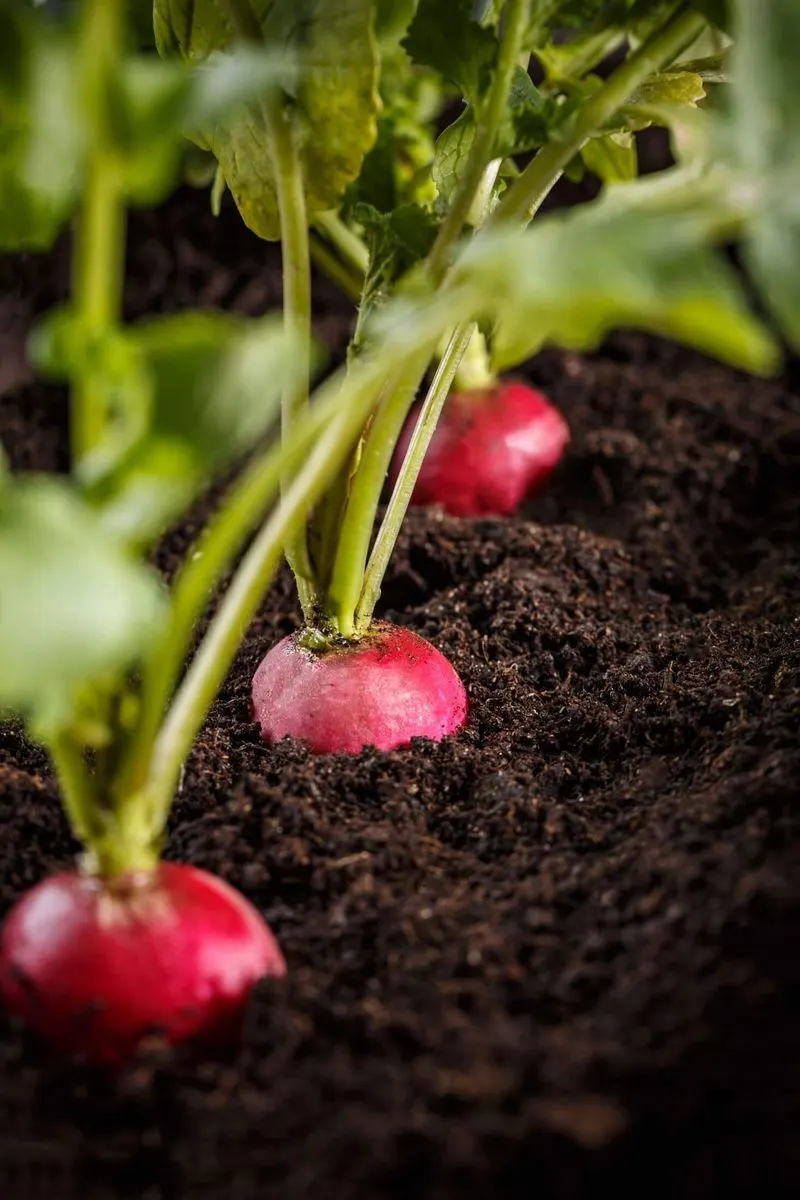
Radishes make excellent companions for cantaloupes, primarily due to their fast-growing nature. They help loosen the soil, promoting better aeration and drainage for cantaloupe roots. This improved soil structure is crucial for healthy plant growth. Radishes also act as a trap crop, luring pests away from your cantaloupes. By diverting the attention of unwanted insects, your main crops can thrive with fewer disturbances. Plant radishes at regular intervals among your cantaloupes to make the most of this beneficial relationship. Their quick harvest time adds to their practicality, allowing for multiple planting cycles each season.
Nasturtiums

Nasturtiums offer a delightful companion to cantaloupes, bringing both beauty and practicality to the garden. Their trailing habit provides excellent ground cover, reducing weed growth and retaining soil moisture. Beyond aesthetics, nasturtiums are known for their ability to attract aphids away from your prized cantaloupe plants. This sacrificial role helps protect your main crop, minimizing pest damage. Additionally, nasturtiums attract beneficial insects, such as hoverflies, which feast on aphids and other pests. These dual advantages make them a smart choice for any cantaloupe garden. Their edible flowers are a bonus, adding color and flavor to salads.
Corn
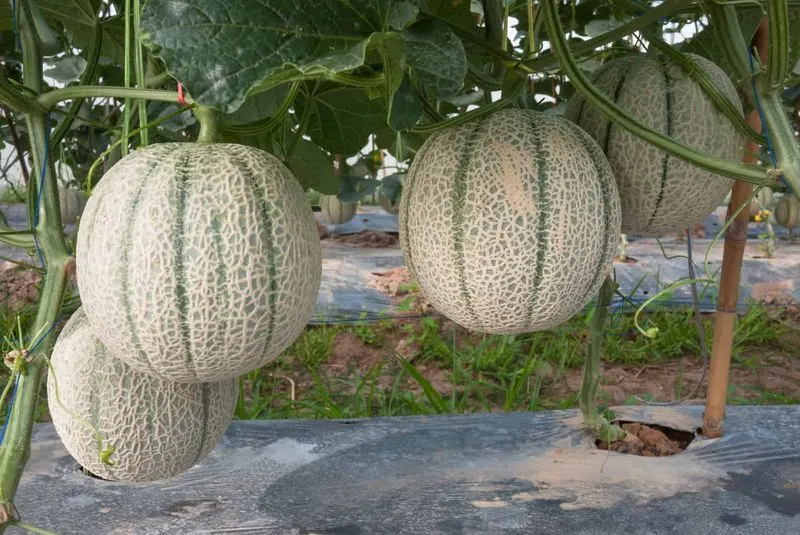
Corn and cantaloupes form a symbiotic relationship that benefits both plants. The tall corn stalks provide shade, protecting cantaloupes from excessive sun exposure, which can stress the plants. In return, cantaloupes act as a natural mulch, covering the soil and helping retain moisture for both crops. This mutualistic arrangement leads to healthier plants and a more productive garden. The robust structure of corn also acts as a windbreak, safeguarding the delicate cantaloupe vines. This partnership showcases the power of plant synergy, allowing gardeners to make the most of their available space and resources.
Basil
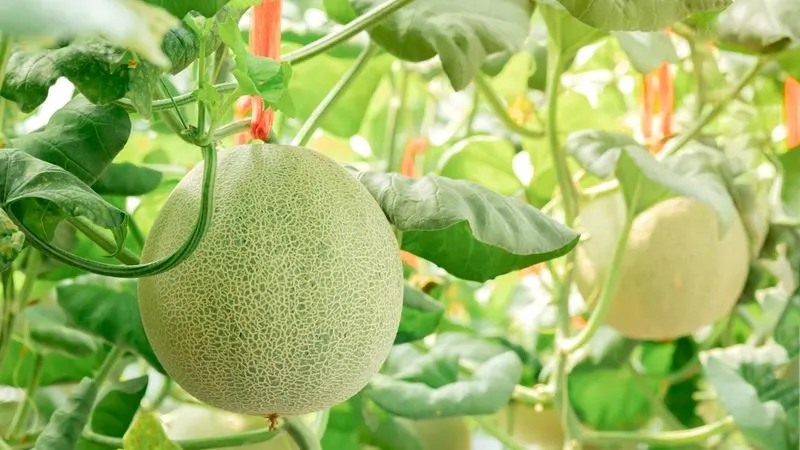
Basil is a fragrant herb that pairs perfectly with cantaloupes, offering both culinary and horticultural benefits. Its strong scent deters pests like whiteflies and aphids, protecting your cantaloupe plants. Planting basil nearby can also enhance pollination, as it attracts bees and other pollinators. This increased pollinator activity aids in fruit development, leading to a more abundant harvest. Additionally, the aromatic leaves of basil can be harvested throughout the growing season, providing fresh herbs for the kitchen. This versatile partnership highlights the importance of strategic plant placement in achieving a thriving garden ecosystem.
Lettuce
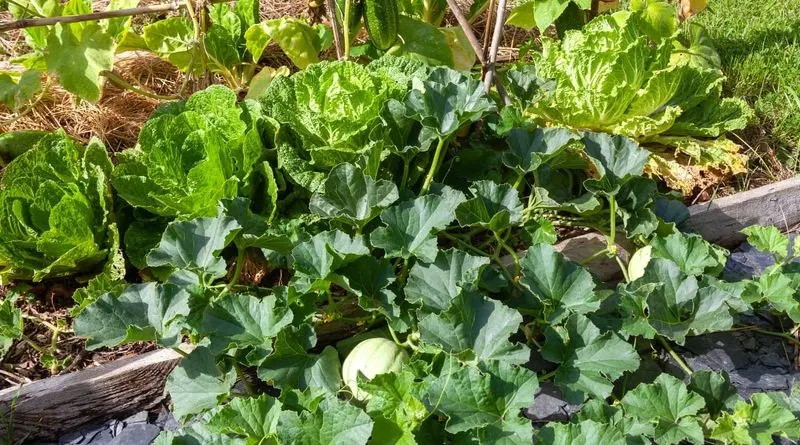
Lettuce is an ideal companion for cantaloupes, thriving in the partial shade provided by the sprawling vines. This leafy green benefits from the cooler microclimate created by cantaloupes, which helps prevent lettuce from bolting. By planting lettuce in the same bed, you maximize space and enjoy a steady supply of fresh greens. Lettuce also aids in weed suppression, as its fast-growing foliage covers the soil and blocks sunlight. This partnership allows for efficient use of garden resources, providing both healthy cantaloupes and crisp lettuce for your meals. The combination of these plants contributes to a well-rounded and productive garden.
Beans
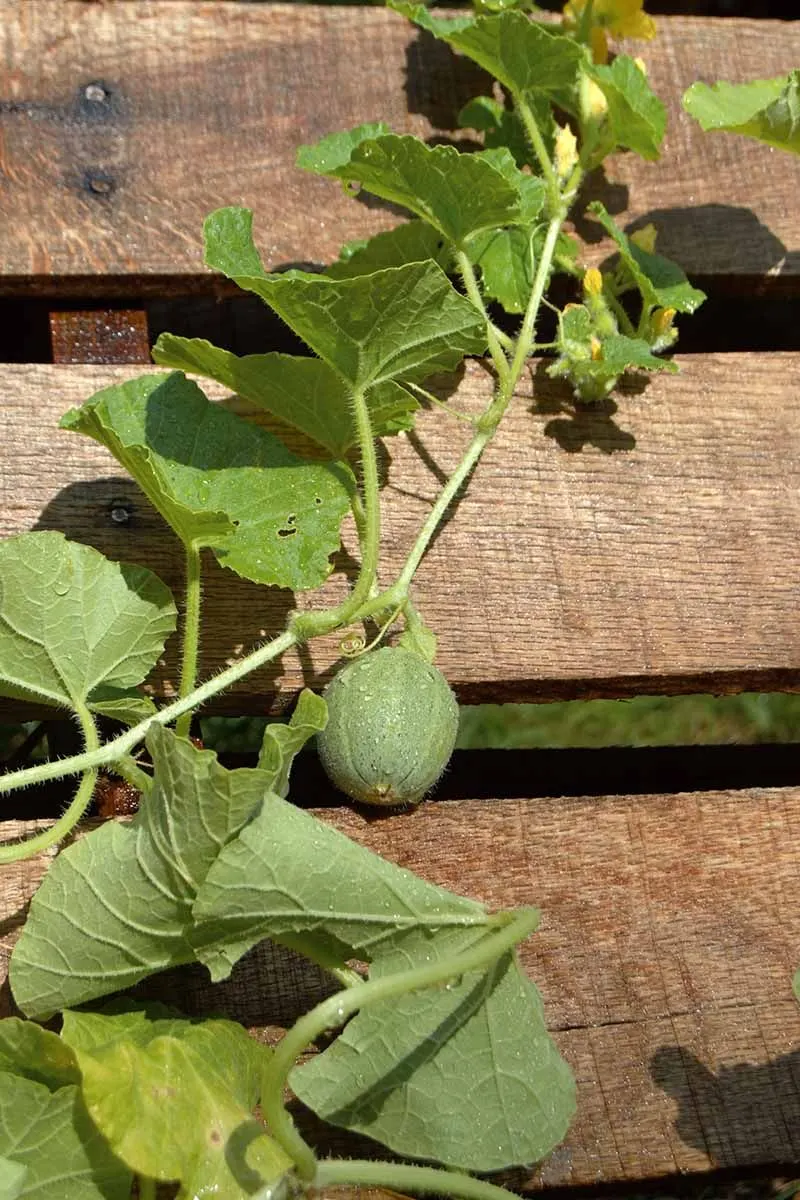
Beans, particularly pole varieties, are excellent companions for cantaloupes, offering a mutually beneficial relationship. As legumes, beans fix nitrogen in the soil, enhancing fertility and supporting cantaloupe growth. In return, the sprawling nature of cantaloupe plants provides ground cover, retaining moisture for both crops. This symbiotic relationship leads to healthier plants and a more bountiful harvest. Additionally, beans can climb and use cantaloupe vines as support, saving space in the garden. By interplanting these two crops, you create a dynamic garden ecosystem that maximizes productivity and soil health, proving the power of companion planting.
Sunflowers

Sunflowers and cantaloupes create a visually stunning and mutually beneficial garden duo. The towering sunflowers offer natural support for cantaloupe vines, allowing them to climb and spread efficiently. Their height also provides partial shade, helping to regulate temperature and reduce heat stress for cantaloupes. Sunflowers attract pollinators like bees, which are essential for cantaloupe fruit development. This increased pollination activity results in a more productive harvest. Furthermore, sunflowers are known to improve soil health by drawing up nutrients from deep within the ground. This partnership harmonizes aesthetics with practicality, creating a thriving garden environment.
Onions
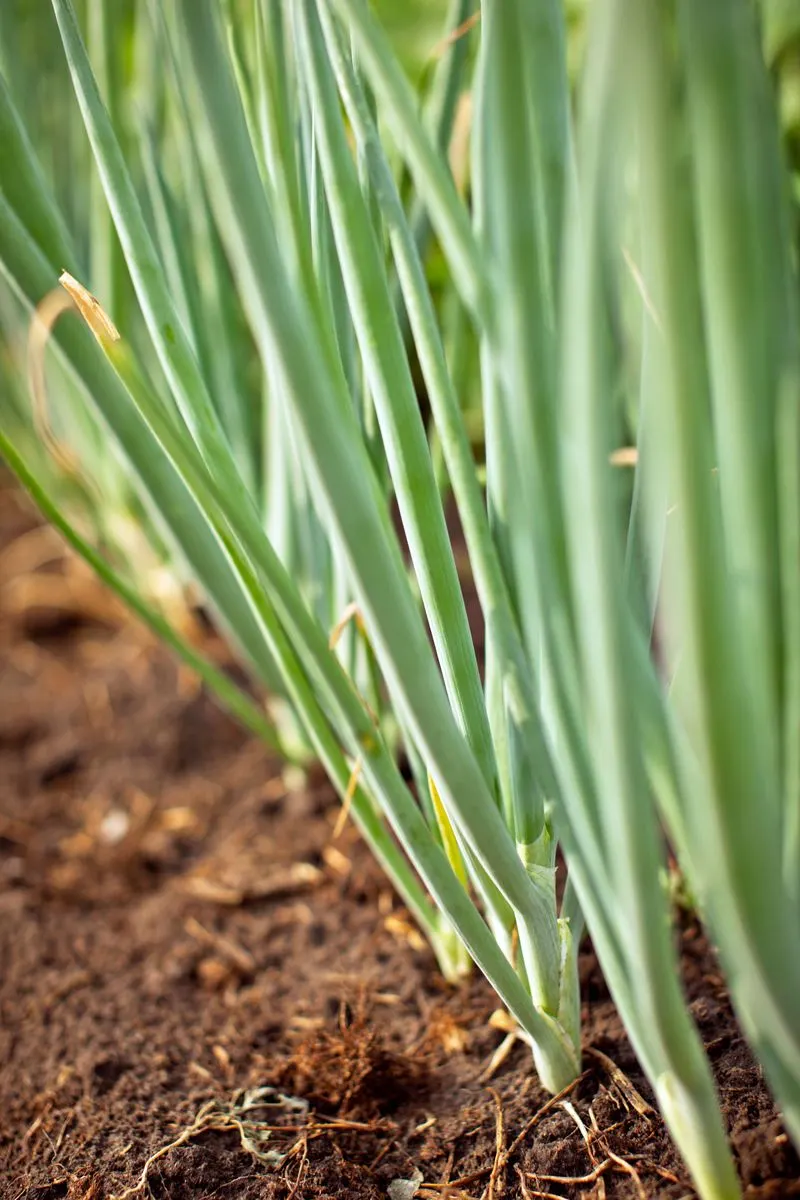
Onions are a smart addition to a cantaloupe garden, offering natural pest deterrence. Their pungent aroma confuses and repels many common pests that might otherwise target cantaloupes. Planting onions around your cantaloupe patch creates a protective barrier, reducing the need for chemical interventions. Additionally, onions have shallow roots, minimizing competition for nutrients and water with cantaloupes. This complementary root structure ensures both plants receive the resources they need. The combination of onions and cantaloupes not only enhances garden health but also provides a diverse harvest, adding both flavor and functionality to your garden space.
Garlic
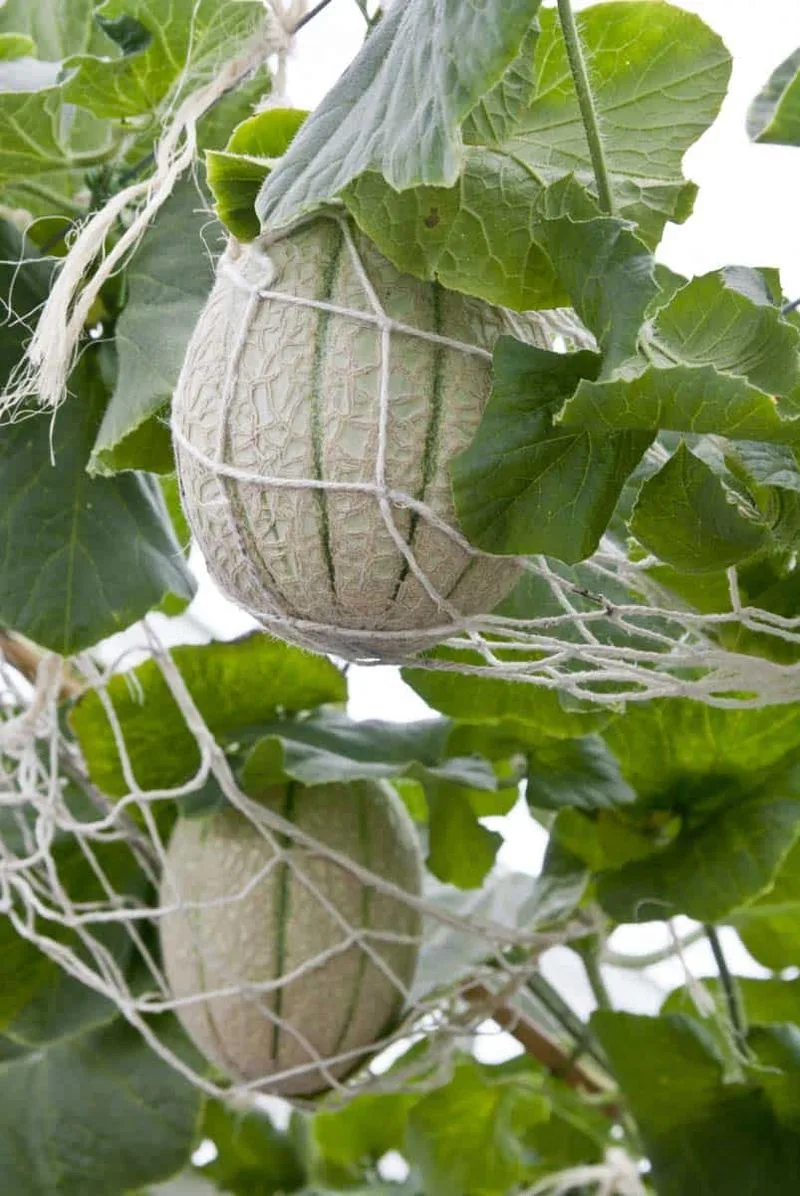
Garlic serves as an excellent companion for cantaloupes, primarily due to its strong scent, which acts as a natural pest repellent. This aromatic bulb deters insects like aphids and beetles, protecting your cantaloupe crops from damage. Planting garlic around cantaloupes creates a robust pest control strategy, minimizing the need for chemical pesticides. Additionally, garlic’s compact growth habit allows it to coexist peacefully with sprawling cantaloupe vines, maximizing garden space. Harvesting garlic also adds culinary benefits, offering fresh flavor for your kitchen. This strategic pairing highlights the advantages of combining pest control with practical planting.
Carrots
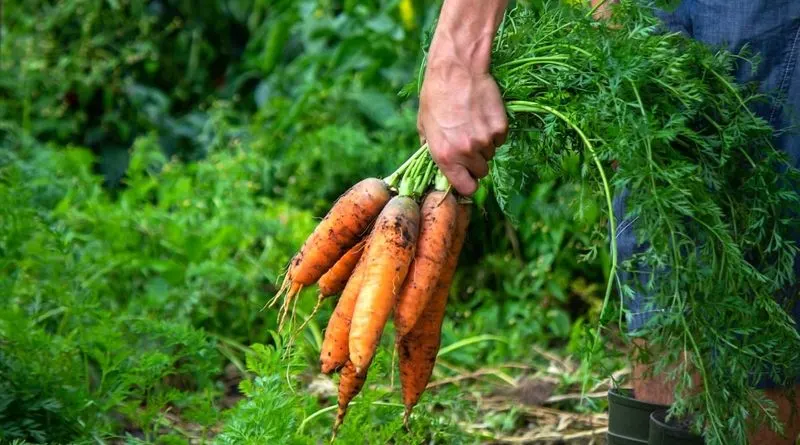
Carrots make a beneficial companion to cantaloupes, as their deep root system helps aerate the soil. This enhanced soil structure promotes better water infiltration and nutrient absorption, supporting cantaloupe growth. Additionally, carrots and cantaloupes have minimal competition for resources, as their root systems occupy different soil layers. This harmonious coexistence ensures both plants thrive without hindering each other. By interplanting carrots and cantaloupes, you create a diverse garden that maximizes the use of space and resources. The combination of these two crops provides a varied harvest, offering both sweet fruits and crunchy vegetables for your table.
Oregano
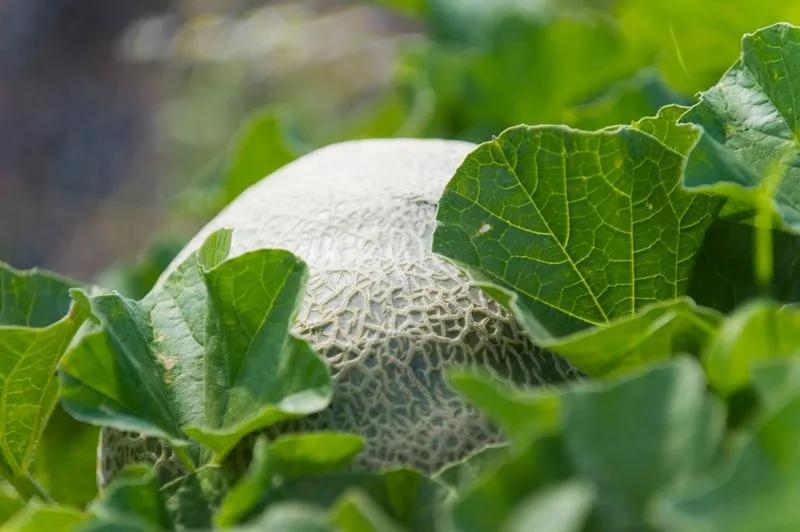
Oregano is a wonderful companion for cantaloupes, thanks to its aromatic properties that repel pests. Its strong scent confuses and deters insects like aphids and spider mites, reducing pest pressure on your cantaloupe plants. Planting oregano nearby creates a fragrant barrier that enhances garden health. Additionally, oregano attracts beneficial insects, such as bees and butterflies, which aid in pollination. This increased pollinator activity supports cantaloupe fruit development, leading to a more abundant harvest. The combination of oregano and cantaloupes exemplifies the benefits of aromatic herbs in companion planting, providing both protective and productive advantages.
Parsley
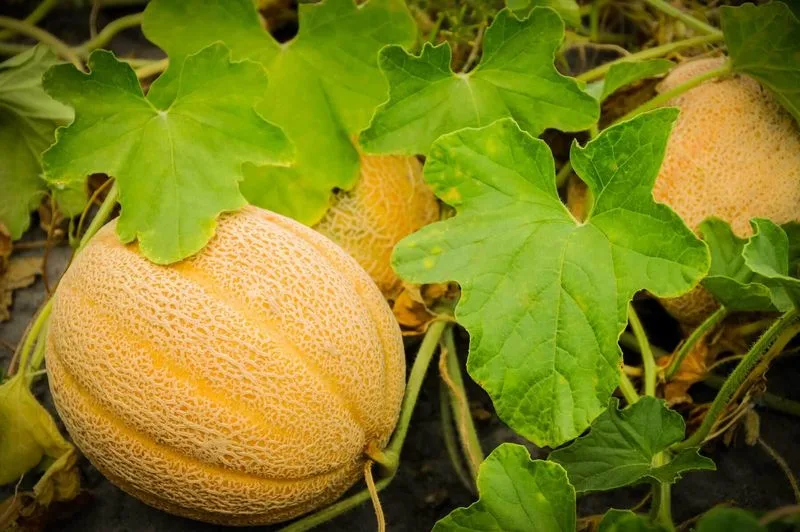
Parsley offers various benefits when planted alongside cantaloupes, making it a valuable garden companion. This herb is known to attract beneficial insects, such as hoverflies and ladybugs, which help control pest populations. By encouraging these natural predators, parsley reduces the need for chemical pest control measures. Additionally, parsley’s compact growth habit fits well with sprawling cantaloupe vines, optimizing garden space. The aromatic leaves of parsley can also be harvested throughout the growing season, providing fresh flavor for your culinary creations. This versatile pairing enhances both garden productivity and culinary diversity, showcasing the power of strategic planting.
Tansy
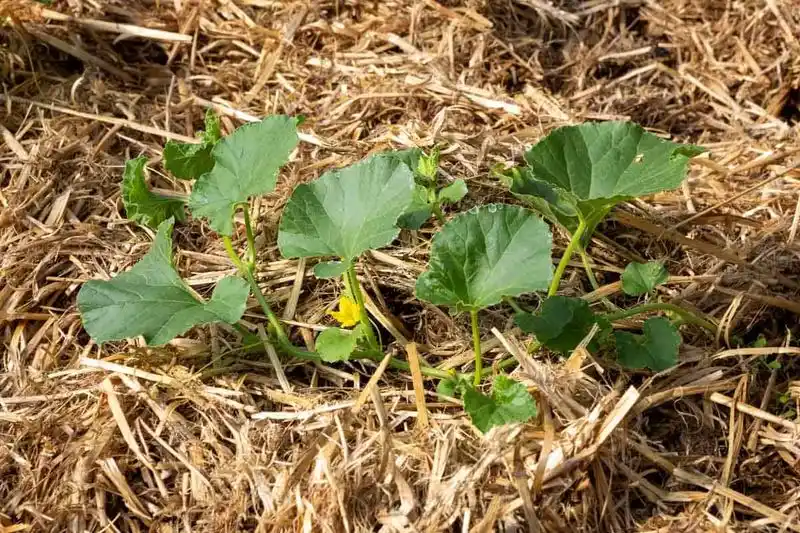
Tansy is a robust companion plant for cantaloupes, offering natural pest control benefits. Its aromatic foliage repels common pests like ants, beetles, and aphids, creating a protective barrier around your cantaloupe crops. Planting tansy nearby reduces the need for chemical pesticides, promoting an eco-friendly gardening approach. Additionally, tansy attracts beneficial insects, such as ladybugs and predatory wasps, which help maintain pest balance. The bright yellow flowers of tansy add visual appeal to the garden, enhancing its aesthetic value. This combination of pest control and beauty makes tansy a practical and attractive choice for cantaloupe gardens.
Dill
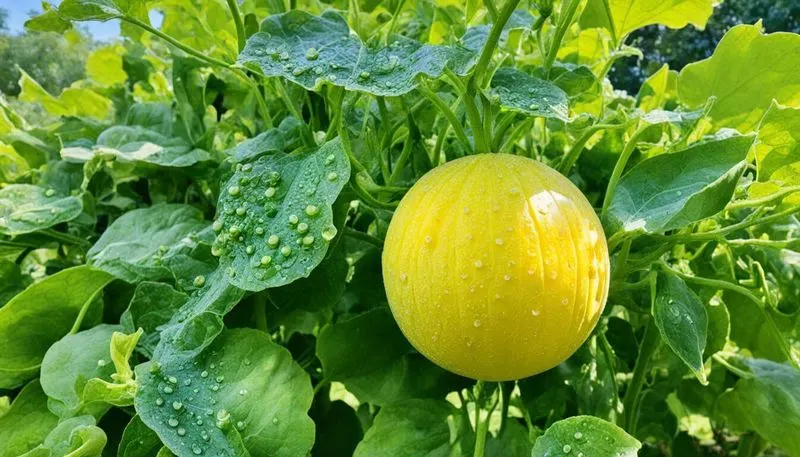
Dill is a valuable ally for cantaloupes, providing both pest control and pollination benefits. Its aromatic leaves and flowers attract beneficial insects like predatory wasps and hoverflies, which help manage pest populations. This natural pest control reduces the need for chemical interventions. Additionally, dill attracts pollinators, such as bees, which enhance cantaloupe fruit development. Planting dill near cantaloupes creates a dynamic garden environment, where both plants thrive. The feathery foliage of dill adds texture and visual interest to the garden, complementing the lush growth of cantaloupe vines. This partnership exemplifies the benefits of integrating herbs into the garden.
Thyme
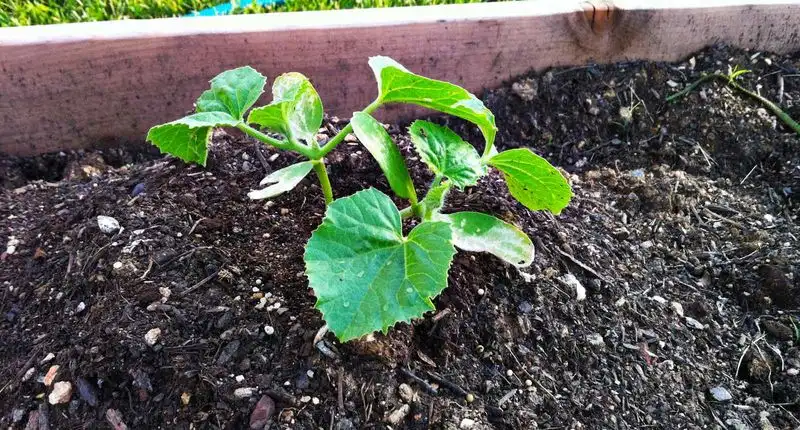
Thyme is a compact herb that pairs well with cantaloupes, offering pest deterrence and ground cover benefits. Its aromatic foliage confuses and repels pests like cabbage worms and aphids, protecting your cantaloupe plants. Planting thyme alongside cantaloupes creates a fragrant barrier that enhances garden health. Additionally, thyme spreads low to the ground, providing effective cover that reduces weed growth and retains soil moisture. This dual functionality makes thyme an efficient companion plant, optimizing space and resources in the garden. The combination of thyme and cantaloupes illustrates the advantages of using aromatic herbs in companion planting strategies.
Calendula

Calendula is a cheerful companion for cantaloupes, offering both beauty and practicality. Its bright orange flowers attract beneficial insects like pollinators and predatory insects, enhancing garden biodiversity. These insects help with cantaloupe pollination and pest management, leading to healthier plants and improved harvests. Additionally, calendula’s dense foliage provides ground cover, reducing weed growth and preserving soil moisture. This beneficial relationship highlights the importance of integrating flowering plants into the garden. The combination of calendula and cantaloupes creates a vibrant and productive garden space, showcasing the synergy between aesthetics and functionality in companion planting.
Yarrow
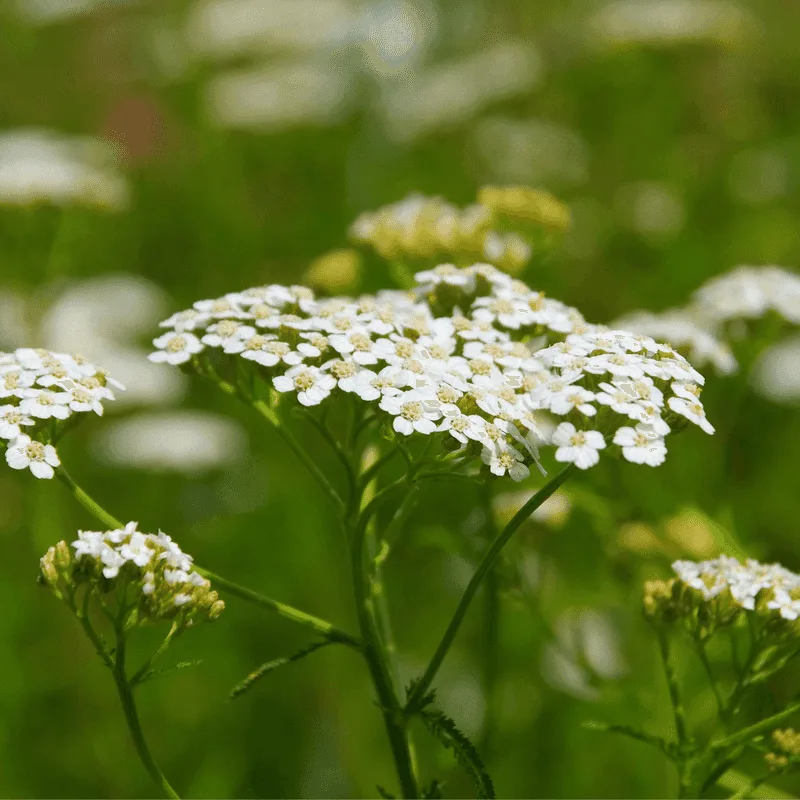
Yarrow is a beneficial companion for cantaloupes, enhancing garden health through its multifaceted properties. Its flowers attract beneficial insects, such as ladybugs and parasitic wasps, which aid in pest control. By managing pest populations naturally, yarrow reduces the need for chemical pesticides. Additionally, yarrow’s deep roots improve soil aeration and nutrient uptake, supporting cantaloupe growth. This enhanced soil structure benefits both plants, leading to a more productive garden. The white, feathery blooms of yarrow add visual interest, complementing the lush greenery of cantaloupe vines. This partnership demonstrates the harmonious blend of beauty and functionality in companion planting.

